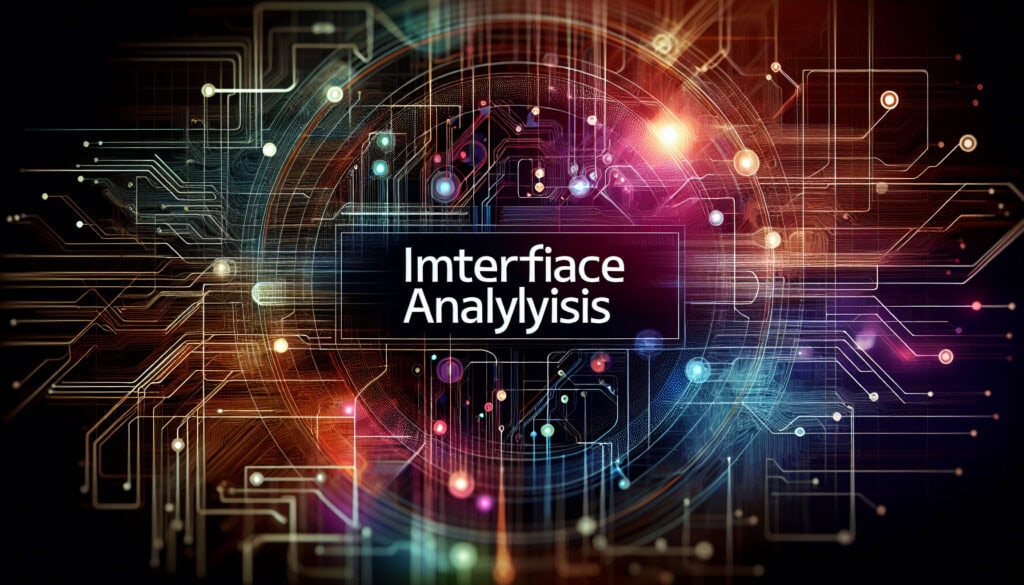To identify and analyze the interfaces between different systems or components.
- المنهجيات: الأفكار, حل المشكلات
Interface Analysis

Interface Analysis
- واجهة برمجة التطبيقات (API), التصميم من أجل التصنيع (DfM), تحسين التصميم, التفاعل بين الإنسان والحاسوب, Quality Management System (QMS), لغة نمذجة النظم (SysML), تجربة المستخدم (UX), واجهة المستخدم (UI)
الهدف:
كيفية استخدامه:
- A systematic process for identifying and analyzing the interfaces between different systems, subsystems, or components. It is used to ensure that the interfaces are complete, consistent, and well-defined.
الايجابيات
- Helps to ensure that systems will work together correctly; Can identify potential integration problems early in the development process.
سلبيات
- Can be time-consuming and complex to perform; Requires a deep understanding of the systems being analyzed.
الفئات:
- الهندسة, إدارة المشاريع
الأفضل لـ
- Ensuring that different systems or components will be able to communicate with each other effectively.
Interface Analysis plays a significant role in the design and development of interconnected systems within various industries such as aerospace, automotive, software development, telecommunications, and robotics. This methodology is typically applied during the system engineering phase of a project, particularly when multiple teams or stakeholders are involved in creating components that will interact with one another. It encourages collaboration among engineers, designers, and project managers to create a comprehensive understanding of how interfaces will function and be utilized. Initiating this process often involves system architects or lead engineers who facilitate workshops or discussions to map out the interaction points, ensuring that design specifications are aligned with integration requirements. Throughout the دورة حياة المنتج, Interface Analysis can be revisited, particularly during the verification and validation stages, when prototypes are tested to confirm that all systems communicate as intended. This approach not only identifies compatibility issues early on but also lays the groundwork for robust documentation that can streamline future maintenance and upgrades, making it easier for teams to implement changes without disrupting existing functionality. Applications include developing communication protocols for إنترنت الأشياء devices, ensuring safety standards in automotive systems, or coordinating software modules in a cloud infrastructure, all of which require meticulous attention to how individual components will process and share information.
الخطوات الرئيسية لهذه المنهجية
- Identify systems, subsystems, or components that require interface analysis.
- Define the functional requirements for each interface.
- Document current interface specifications and standards.
- Analyze the interactions between systems or components, focusing on data flow and control.
- Identify potential conflicts or incompatibilities in interface design.
- Develop interface design solutions that address identified issues.
- Iterate the design based on feedback and testing outcomes.
- Verify interface compliance with defined requirements.
نصائح للمحترفين
- Utilize model-based systems engineering (MBSE) to create a visual representation of interfaces, enhancing clarity and communication across all teams involved.
- Conduct interface control document (ICD) reviews regularly throughout the development lifecycle to verify adherence to interface specifications and standards.
- Implement rapid prototyping of interfaces to test interoperability early, allowing for quick identification of discrepancies and iterative refinement before full-scale production.
لقراءة عدة منهجيات ومقارنتها, نوصي باستخدام
> مستودع المنهجيات الشامل <
مع أكثر من 400 منهجية أخرى.
نرحب بتعليقاتكم على هذه المنهجية أو المعلومات الإضافية على قسم التعليقات أدناه ↓، وكذلك أي أفكار أو روابط متعلقة بالهندسة.
منشورات ذات صلة
محاكاة مونت كارلو
الاختبار المستند إلى النموذج
التحقق من النموذج
بحوث الأساليب المختلطة
تدقيق الأخطاء (بوكا يوك)
اختبار الملف الشخصي للمهمة